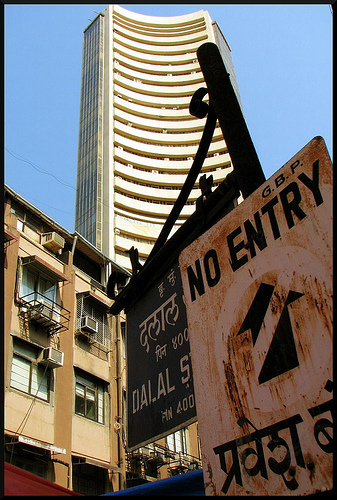From news coming out of the US, it is clear that the States has been in recession since December 2007 already, which implies that WEO’s estimate of US growth of 1.6 per cent in 2008 is overly optimistic. With house prices still declining, construction at a near standstill and unemployment numbers worsening with each successive week, it now seems that US economy could contract by as much as 5 per cent in the fourth quarter of 2008. This in all likelihood implies that the US economy will perhaps remain recession bound through 2009 despite the trillion dollar stimulus package, reportedly under consideration of the new administration. The UK and Germany, the two largest economies in the Eurozone are also likely to see negative growth in 2009. And Japan, with its exports in November 2008 plunging 26 per cent over the same month in 2007, is likely to be recession bound in 2009. The news coming out of China also points to a sharper decline in their exports and GDP growth than is forecast in the latest WEO. I would, therefore, not be surprised to see the advanced economies actually experience a real contraction and see their GDP decline in 2009. With large emerging economies also now expected to grow much slower, we will be fortunate if the global economy registers a positive rate of growth in 2009. Indeed a tough year ahead.
This implies a very weak external demand for India and other emerging economies. India is not as dependent on external demand for its growth impetus as China, where exports account for 40 per cent of the GDP compared to India’s 23 per cent (including both goods and services). But with a very low consumption ratio and high import ratio, China’s income multiplier is lower than India’s. Therefore, the contribution of exports to GDP may not be much lower in India, in comparison with China. Merchandise exports have been growing at 31 per cent till September 2008. Software exports grew by 21 per cent till the first quarter of 2008-09 and remittances by over 50 per cent. However, export growth slowed down sharply in September 2008 and turned negative by a large 12 per cent in October. Export growth could all fall to 10 per cent or below in 2008 and next year due to the weak global economy. This by itself could bring down the GDP growth sharply in 2009.
So any forecast for the Indian economy, that puts 2009-10 growth rate at higher than in 2008-09 sounds rather incredible. And to forecast near 8 per cent growth in 2009-10, as some senior official economists have apparently done perhaps verges on the irresponsible. Indian investors would be better advised to completely discount such wild optimism. They should instead consolidate capacities and try to become more competitive in preparation for the next upturn that could hopefully start in 2010. It is never inevitable that a high savings rate like 33 per cent in India and 53 per cent in China will produce high growth rates. High savings rates can simply result in growing bank deposits and worsening deposit to credit ratios, as Japan has seen over a decade. Economies can suffer from excess capacity expansion that does not generate output. Economies can also export away their savings as reflected in current account surpluses which for China is estimated by the IMF to be at about 9 per cent of GDP in 2009!
Indian policy makers are less sanguine about 2009 growth prospects as is reflected in the official encouragement to recalcitrant commercial banks to reduce lending rates and in offering incentives to exporters and small house owners. These growth stimulating policies and the focus also on structural reforms to ensure that economic growth recovers need to continue in the second half of 2009. The first half of next year will perhaps see less than 5 per cent growth and so a recovery in the second half of next year is the best we can hope for.

